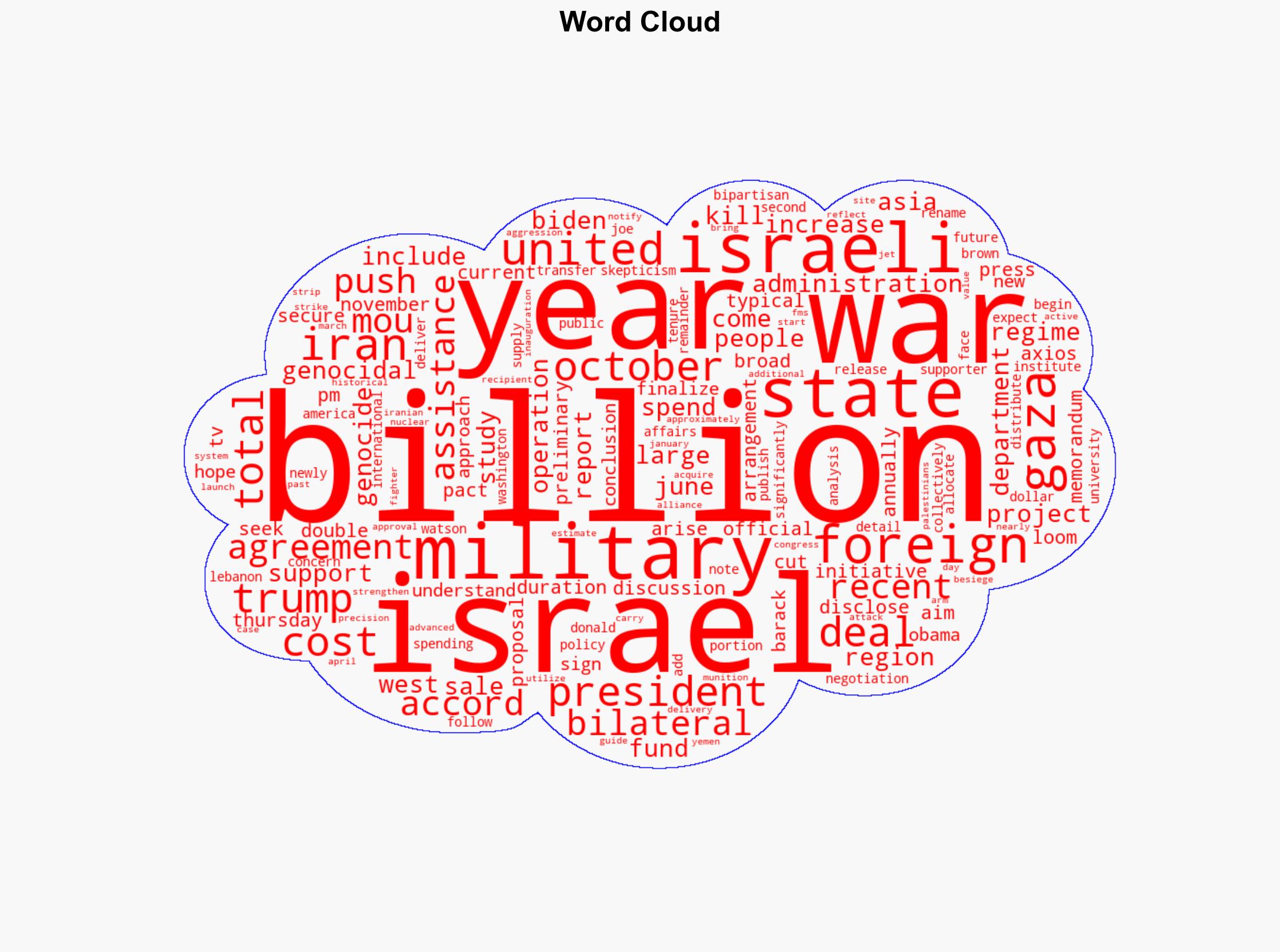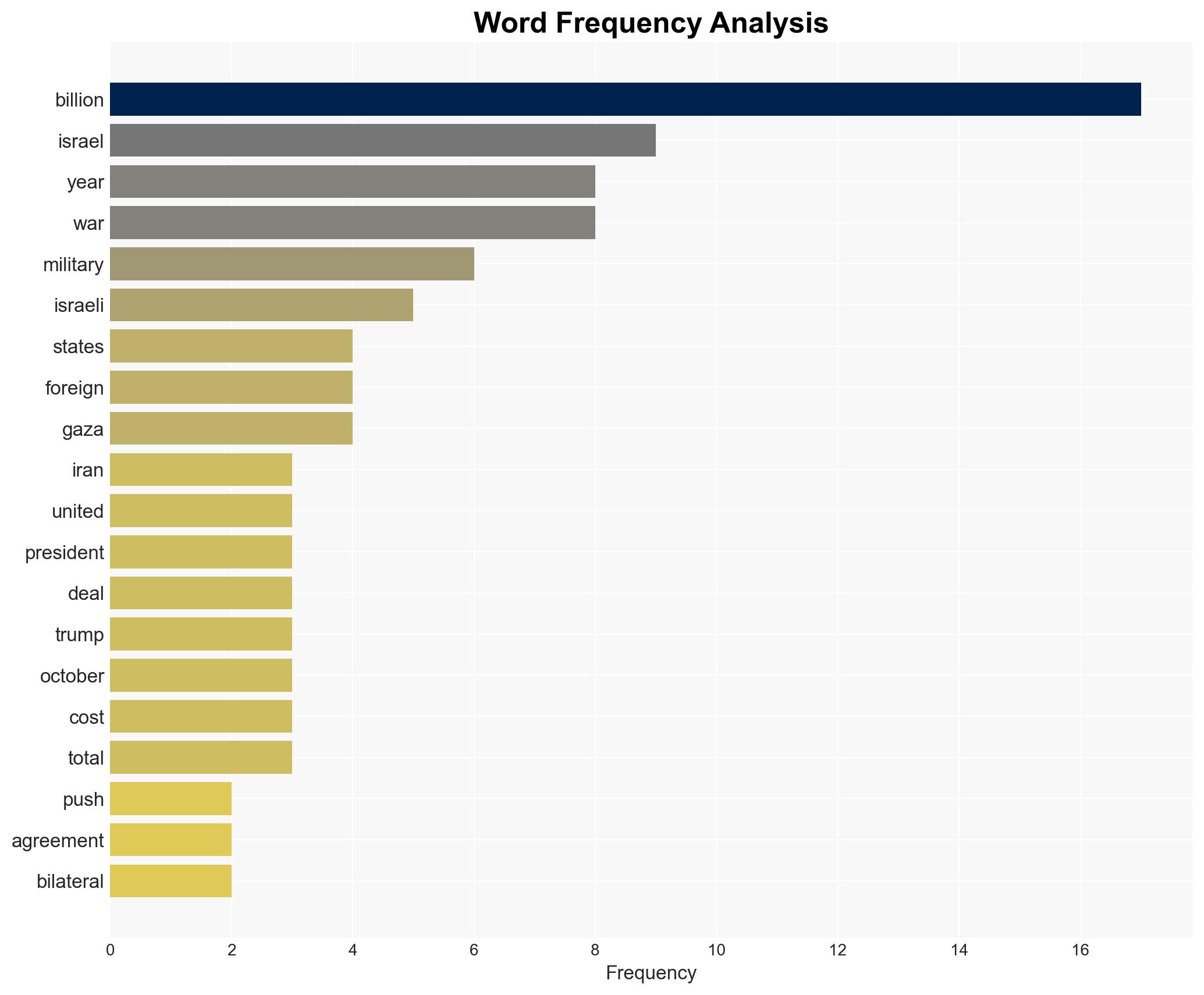Israel pushes for 20-year US military aid pact – Globalsecurity.org
Published on: 2025-11-14
AI-powered OSINT brief from verified open sources. Automated NLP signal extraction with human verification. See our Methodology and Why WorldWideWatchers.
Intelligence Report: Israel pushes for 20-year US military aid pact – Globalsecurity.org
1. BLUF (Bottom Line Up Front)
The most supported hypothesis is that Israel seeks to secure long-term military aid from the United States to ensure strategic stability and maintain military superiority in the region. This effort is likely driven by perceived threats from Iran and regional instability. Confidence Level: Moderate. Recommended action includes diplomatic engagement to assess the implications on regional security dynamics and U.S. foreign policy objectives.
2. Competing Hypotheses
Hypothesis 1: Israel is pushing for a 20-year military aid pact to ensure long-term security and military superiority in the Middle East, particularly in response to perceived threats from Iran and regional instability.
Hypothesis 2: The push for an extended military aid pact is primarily a strategic maneuver by Israel to secure economic benefits and political leverage within the U.S. foreign policy framework, irrespective of immediate security threats.
Hypothesis 1 is more likely due to the historical context of Israel’s security concerns and its reliance on U.S. military support to counterbalance regional adversaries, particularly Iran.
3. Key Assumptions and Red Flags
Assumptions:
– Israel perceives an increasing threat from Iran and regional instability.
– The U.S. is willing to maintain or increase military aid to Israel despite domestic and international scrutiny.
Red Flags:
– Potential exaggeration of threats to justify increased military aid.
– Domestic political pressures in the U.S. could influence the aid decision.
4. Implications and Strategic Risks
The extension of military aid could exacerbate regional tensions, particularly with Iran, leading to an arms race or increased hostilities. It may also strain U.S. relations with other Middle Eastern countries and complicate diplomatic efforts. Economically, it could impact U.S. foreign aid budgets and priorities.
5. Recommendations and Outlook
- Engage in diplomatic dialogue with Israel to understand their security concerns and explore alternative security arrangements.
- Assess the potential impact on U.S. relations with other Middle Eastern countries and adjust diplomatic strategies accordingly.
- Best-case scenario: The aid pact strengthens U.S.-Israel relations and deters regional adversaries without escalating tensions.
- Worst-case scenario: The aid pact leads to increased regional instability and arms proliferation.
- Most-likely scenario: The aid pact is secured, maintaining the status quo in U.S.-Israel relations, with moderate regional pushback.
6. Key Individuals and Entities
President Joe Biden, President Donald Trump, Israeli officials, U.S. Congress.
7. Thematic Tags
Regional Focus, Middle East, U.S. Foreign Policy, Military Aid, Israel, Iran
Structured Analytic Techniques Applied
- Causal Layered Analysis (CLA): Analyze events across surface happenings, systems, worldviews, and myths.
- Cross-Impact Simulation: Model ripple effects across neighboring states, conflicts, or economic dependencies.
- Scenario Generation: Explore divergent futures under varying assumptions to identify plausible paths.
Explore more:
Regional Focus Briefs ·
Daily Summary ·
Support us
·





